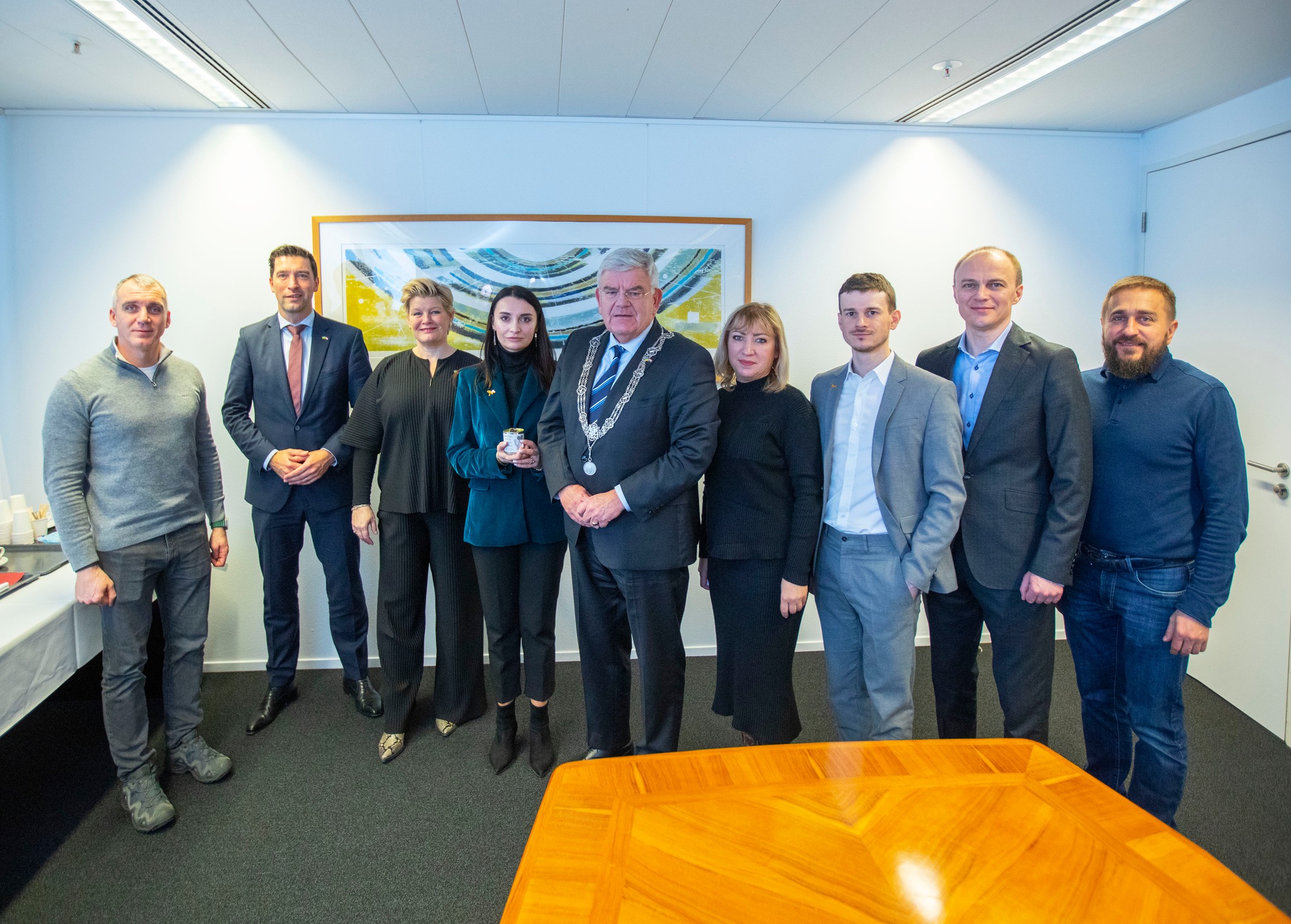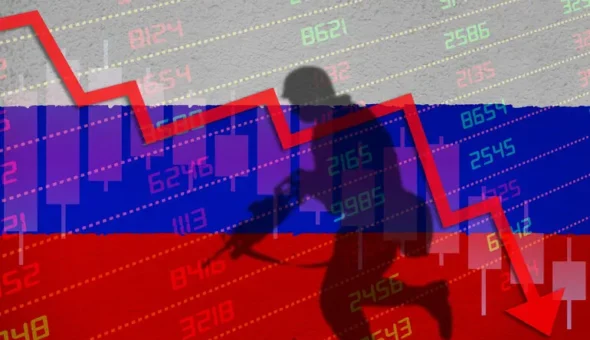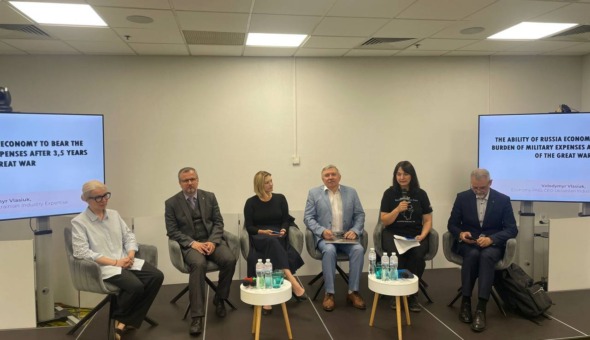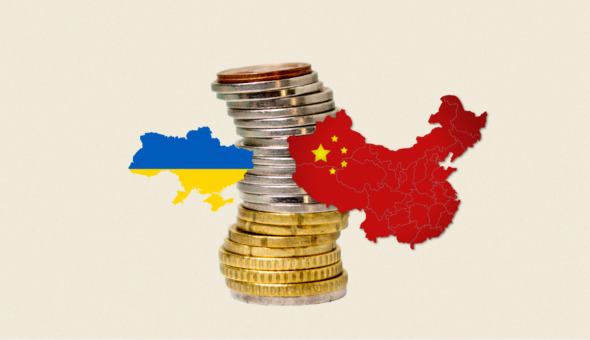
Post-war recovery of Ukrainian cities: how to make it more than just a “repair,” but an opportunity to establish communities that take into consideration the greatest global techniques for rethinking space, so that citizens can live in comfort and safety.
With the goal of studying the greatest global experience in rebuilding the National Interests Advocacy Network “ANTS” organised a specialized trip to the Netherlands for the leaders of the port cities of Mariupol, Mykolaiv, and Kherson, which were attacked by russian aggression. They went to Rotterdam, which was largely decimated by bombing during WWII and is now a symbol of post-war regeneration for the Dutch.
As Ukraine now faces russian full-scale invasion, it is important to consider how our country can recover from the war.
“The community leaders’ visit to Rotterdam teaches them how to approach this challenging issue. It is essential to carefully select the best course of action and develop a precise strategy in preparation so that it may be implemented as quickly as possible after victory. Let us be inspired by Rotterdam and other cities that have successfully rebuilt after the war and collaborate to build a future we can be proud of,” – Yuliya Vusenko, who is accompanying community leaders on the tour, agreed.
Rotterdam was chosen for these visit not by chance, because it is this city that can share the successful experience of recovery.
“Why did we choose the Netherlands? Because their expertise, particularly that of Rotterdam, is tremendously beneficial for these communities as they prepare to rebuild. We and our partners agree that full-fledged reconstruction can begin only after the end of hostilities and Ukraine’s victory, but we can begin preparing for this process now by working on projects, visions of city development, and changing the rules and procedures that should encourage donors and partners to cooperate with Ukrainian cities, – says Vasyl Sehin, executive director of the ANTS. – We also chose the Netherlands because it has a high level of autonomy and local self-government capacity. This is also a valuable experience. Because there has been major destruction in a huge number of cities in Ukraine, resolving reconstruction difficulties at the central level may take a very long period. Furthermore, there is a risk of failing to consider local circumstances and characteristics, as well as, most all, the requirements of the local community.”
Since Rotterdam’s mayor, Ahmed Abutaleb, has stated, Ukraine should be prepared for decades of recovery, as the city’s post-war reconstruction is still happening.
“The city should be designed for humans, not machines. We made a mistake in the early stages of postwar reconstruction by widening the roadways, but we are now actively repairing it. The majority of city residents ride bicycles.”
Vasyl Sehin emphasized that Ukrainian cities during recovery must be designed to meet the needs of their residents as much as possible.
“And we recognize that. Our partners also acknowledged that cities should be structured to suit people’s needs as much as possible and to be inclusive of the population: long excursions, particularly by private transportation, should be avoided. To that end, while designing infrastructure and microdistricts, it is critical to consider pedestrian accessibility to all essential institutions that inhabitants frequently require – pharmacies, kindergartens, schools, and hospitals.”
In addition, each city must take into account its individual aspects.
“The Netherlands, for example, has well developed swimming pools. Do you understand why? Considering The Hague. There are numerous canals, and accidents occur frequently when residents fall into them. In order to increase citizen safety, mandatory courses on water safety rules for youngsters aged 7 to 10 years old have been implemented. They educate how to swim well and how to save other citizens there. They train in clothes and sneakers to simulate real-world conditions as much as feasible. Perhaps less important for Ukraine, but it demonstrates ways to urban development once more. And it is just these techniques that we mean when we say that cities better understand what has to be created and restored in them, and in what order,” – the ANTS Network’s executive director is confident.
It is necessary to start the recovery with the restoration of the economy
In Rotterdam, the Ukrainian delegation was advised to begin reconstruction with the restoration of the economy.
“It is the growth of businesses that creates jobs and works as a magnet for citizens who have left to return to their homes, while also attracting newcomers to the city. After all, a totally repaired infrastructure, residential structures built at the expense of donors or the aggressor country’s reparations, will not entice people to return if they do not have work and the city has the resources to maintain this infrastructure. This should be considered from the beginning in order to avoid making such blunders.”
As the head of the VNG (Swedish Association of Local Governments), The Hague Mayor Jan van Zaanen noted:
“During wars, it is impossible to completely engage in reconstruction, but this is the period when you may reconsider approaches to the development of the city, design a reconstruction strategy and priority projects. You (author’s note: mayors of Ukrainian cities) are already working on reconstruction, studying worldwide experience, and formulating dreams of what your cities should be in the future, and I hope you will soon be able to put them into action. At the same time, keep in mind that the rule of law and transparent procedures for investors, donors, and partners are critical components of post-war reconstruction, and you may start working on them right now. We will support and work for Ukraine’s and Ukrainian cities’ interests. We have strong local self-government in the Netherlands, so we can settle most problems at the municipal level. Such a concept can help Ukraine’s cities rebuild quickly after the war.”
The Netherlands also noted that Mariupol, Mykolaiv and Kherson should think more about the future development of port infrastructure and focus not so much on the export of raw materials as on finished products.
“That is true. After all, if we now believe that a significant number of Chinese items are inexpensive, a huge number of them can be imported, including into Ukraine. In the near future, 3D printers may make these goods more affordable, eliminating the need to import equivalents from other nations, particularly China. and, because Ukraine has a large amount of raw materials, this is another potential development direction: developing good 3D printing technologies for the production of parts in the construction industry and using the raw materials we have for both domestic needs and exporting finished products to foreign countries, – Sehin says. – And in closing, another unique approach of Rotterdam to the growth of cities and to the development of districts in cities. They mandate that 20% of the housing in high-rise structures be social. That is, for residents who do not have a home, need to enhance their living conditions, or have already lost their home due to bombings, etc. When there is one house purely for social requirements, social housing, this technique allows for consistent development of districts, so that there is no stratification. As a result, the income level of the residents of such a house is usually lower, and they are unable to better develop the nearby region. Furthermore, businesses will be less interested in creating service points there, and in fact, neighborhoods where impoverished people will live will be established, maybe with an increase in crime. Other sections, on the other hand, will be elite, with limited access, and so on. As a result, the effect and decrease of crime, as well as the greatest integration of all population groups into city life and uniform sustainable development of all regions, are achieved.”
And one more important observation from the Ukrainian delegation: the mood that prevails at the local level among the population, at the level of municipalities, is subsequently reflected in central decision-making: this is also when Ukraine receives weapons from the Netherlands, as well as political support and visits from key persons from other countries. This is all to convey our unwavering support in our fight against the occupied force.
The non-governmental organization National Interests Advocacy Network “ANTS”, together with its partner the International Center for Ukrainian Victory, promotes cooperation between the heads of Ukrainian territorial communities and international partners.
Additional information:
In May 1940, German aircraft dropped around 97 tons of bombs on Rotterdam, killing 850 people and destroying the central portion of the city covering an area of approximately 2.5 square meters. km, displacing over 80,000 people, or 13% of the city’s population. There were 25,479 residences burned, 31 department stores, 2,320 small businesses, 31 industries, 1,319 workshops, 675 warehouses, 1,437 offices, 13 banks, 19 consulates, 69 schools, 13 church hospitals, 14 state hospitals, and 14 public institutes. There are four train stations, four newspaper offices, two museums, 517 cafes and restaurants, 22 party halls, 12 cinemas, two theaters, and 184 commercial buildings.
The Netherlands capitulated the day after the bombing, after assessing the situation and receiving an ultimatum from Germany concerning the possible destruction of Utrecht. On May 18, 1940, Rotterdam’s city council commissioned architect Willem Gerrit Witteven (1891-1979) to create a new city plan. The reconstruction’s purpose was to transform an industrial city into a modern metropolis. Rotterdam is a symbol of postwar reconstruction for the Dutch. The recovery of the Netherlands following World War II lasted from 1945 until 1968. The rebuilding plan called for the city to be modernized rather than rebuilt in the manner of the previous proposal.



